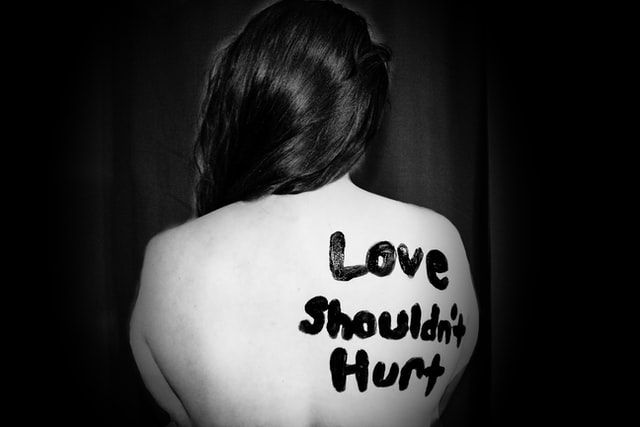
RAINN Day is April 8
Every 68 seconds, someone in the United States becomes a victim of sexual assault. April is sexual assault awareness month, an opportunity for college students to stand against sexual violence. The Rape, Abuse, and Incest National Network (RAINN) has designated April 8 as RAINN Day. Students and other learning community members can promote RAINN Day on social media by using #WontStayQuiet and #RAINNDay. You can also download the RAINN Day Event Planning Guide for ideas on organizing a virtual event.
What We Know About Sexual Assault and Abuse
Some people use the terms “rape” and “sexual assault” interchangeably, but there is a distinction. Rape has traditionally referred to the forced vaginal penetration of a woman by a man. However, this definition overlooks other forms of sexual abuse. Therefore, sexual assault refers to oral, genital, or anal penetration of a victim by an assailant using a part of the assailant’s body or an object without the victim’s consent.
Each year in the U.S., an average of 463,634 people aged 12 or older suffer from sexual assault, and most victims are under the age of 30. People aged 12-34 belong to the age group with the highest risk.
One in six women in the U.S. can expect to be a victim of attempted or completed sexual assault. Females between the ages of 16 and 19 are four times more likely than the population overall to be victims of rape, attempted rape, or sexual assault.
In the U.S., one in eight rape victims tends to be male. Men aged 18-24 who attend college are five times more likely than non-students to suffer sexual assault. About 21% of trans students have been sexually assaulted, compared to eight percent of cis female students and four percent of cis males.
Native American individuals are twice as likely to be victims of sexual assault than other races. On average, Native Americans aged 12 or older experience about 5,900 assaults each year.
A person who suffers sexual violence is more likely to experience increased depressive or suicidal thoughts. Also, about 70 percent of survivors of sexual assault go through moderate or severe distress, which is a higher rate than victims of other violent crimes. Survivors are also six times more likely to use cocaine and 10 times more likely to use other illicit drugs or narcotics.
Sexual Assault and the COVID Pandemic
The coronavirus pandemic has had significant impacts on our health and sense of safety. COVID has also contributed to a shadow pandemic, the dramatic increase in sexual assault and domestic violence against women and girls since the pandemic’s onset.
In general, reports of sexual violence tend to increase during states of emergency, and COVID-19 was no exception. Before vaccines became widely available, it was safer to quarantine at home. Unfortunately, with women’s shelters and rape crisis centers shut down, it was harder for survivors to seek refuge from their abusers. Also, the added isolation from quarantines and lockdowns only intensified the violence.
What to Do If You Recognize Signs of Abuse
In eight out of 10 sexual assault cases, the survivor had known the perpetrator. This familiarity can make it difficult for someone to come forward and report the assault. Knowing the indicators of sexual assault or an abusive relationship can make it easier for you to help someone who has experienced violence. Someone who has survived a sexual assault will likely display one or more of these signs:
- Avoidance of specific locations or social settings
- Signs of depression—changes in appetite, loss of energy, or withdrawal from activities
- Failing grades or lower academic performance
- Increased drug or alcohol use
- Low self-esteem
- Self-harming behaviors or suicidal tendencies
- Unexplained stress or anxiety
- Sexually transmitted infection (STI)
Sexual assault and other forms of abuse can be ongoing. If you suspect that someone you know is in an abusive relationship, you might notice any of the following:
- Dropping classes or spending less time on activities or with friends
- Decreased or limited contact with others
- Disclosing past instances of sexual assault
- Having a partner that intrudes on private conversations or answers their phone or text messages
- Mention of partner forbidding the use of contraceptives or safer sex practices
- Physical signs of abuse
- Reporting that their partner pressures them to do things that cause them discomfort
People who have experienced sexual assault or abuse should know that the violence is or was not their fault. Medical care and counseling are essential for healing and coping with the physical and psychological after-effects. Survivors and supportive others can download the RAINN app to access helpful resources and social support.
Research and materials for this article were compiled, written, and distributed on behalf of the National Public Health Information Coalition. The views and opinions expressed in this blog are those of the various authors and do not necessarily reflect the official policy or position of the National Public Health Information Coalition or its members.
References
https://www.rainn.org/statistics/victims-sexual-violence
https://www.rainn.org/sites/default/files/RAINN%20Day%20Toolkit_0.pdf
https://www.ojp.gov/ncjrs/virtual-library/abstracts/what-difference-between-rape-and-sexual-assault
http://info.primarycare.hms.harvard.edu/review/sexual-violence-and-covid
https://www.rainn.org/statistics/perpetrators-sexual-violence
https://www.rainn.org/articles/warning-signs-college-age-adults

